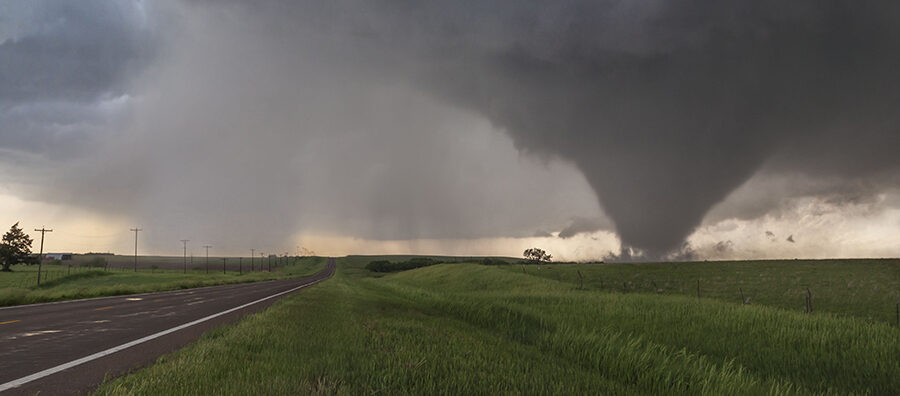Tornadoes can be frightening events. Not sufficiently frightening to stop some people from jumping in their cars and chasing them hoping for some exciting video footage (a pastime we suggest you leave to experts) though even they frequently express anxiety when close to their target and in danger of becoming its. The weather systems responsible for tornadoes are called “severe convective storms” and as we have shown, the IPCC offers very mixed and uncertain claims about whether they are getting worse due to climate change. In the US there is no significant increase in such events, but on the Southern Great Plains, aka tornado alley, while the number of days with tornadoes has decreased the number per day has increased making it a wash overall. The other key number is the value of damages from tornadoes, and according to a recent peer-reviewed study, once you normalize for population and the size of the economy, US tornado losses over the 60 years from 1958 to 2018 significantly declined. As in went down.
The authors, led by Jinhui Zhang of Macquarie University in Australia, noted a 2001 study looking at data from 1890 to 1995 found no evidence that extreme tornado events in the US had become more damaging over time. The authors show that the total number of category F1-F5 tornadoes hasn’t increased since 1950, but that masks a pattern in which the number of F1 tornadoes did grow while F2-F5 tornadoes became slightly less frequent.
They then gathered the damage estimates associated with each tornado and normalized them for inflation and the size of the population and the amount of wealth in the path of each storm (what they call the “bulls-eye effect”. Both the overall normalized losses (left) and the normalized losses per tornado (right) have clearly been trending down:

However, the trends vary by state. For instance they have risen in Alabama but fallen in Texas. The authors conclude:
“Overall, our results suggest a downward trend in tornado losses for the U.S. as a nation, while tornado losses at the state level can have upward or downward trends.”
Another alarmist canard blown away.



The updating of building codes and regulations to obtain building permits and the resultant higher proportion of construction to newer codes can be expected to result in the continuous decline in normalized losses. Better codes reflecting construction experience, nothing much to do with weather or emissions is what these charts show.
Mmm canard
Love the crispy Chinese version